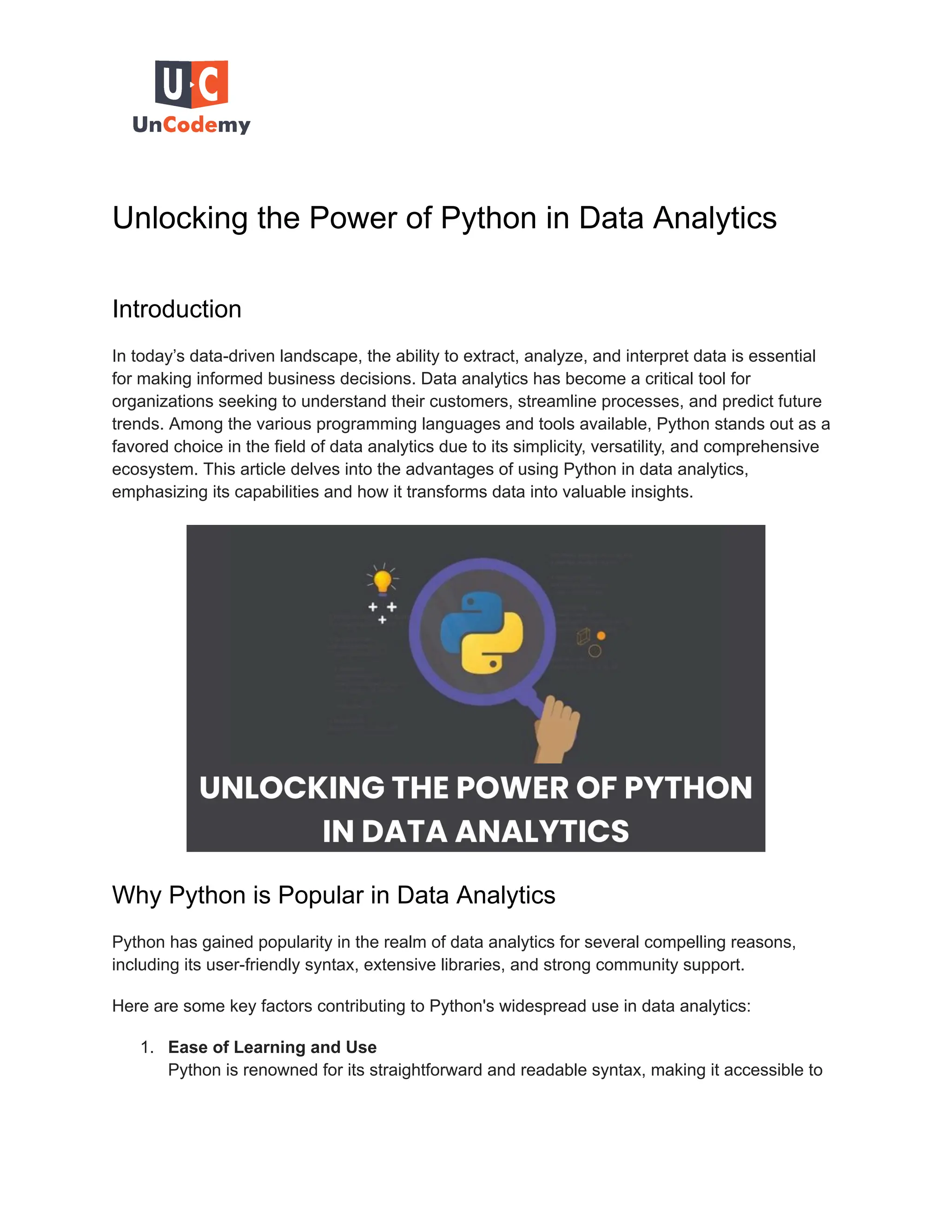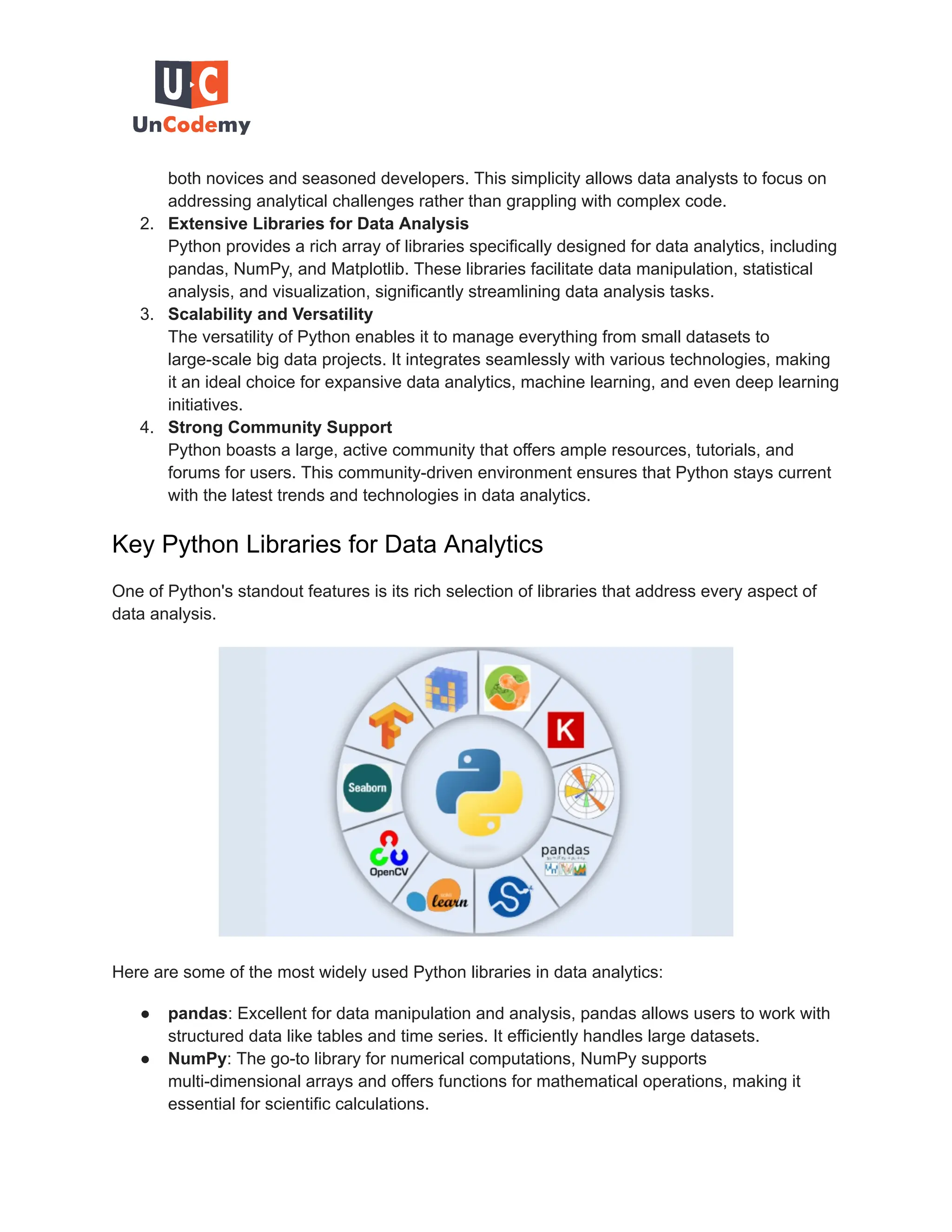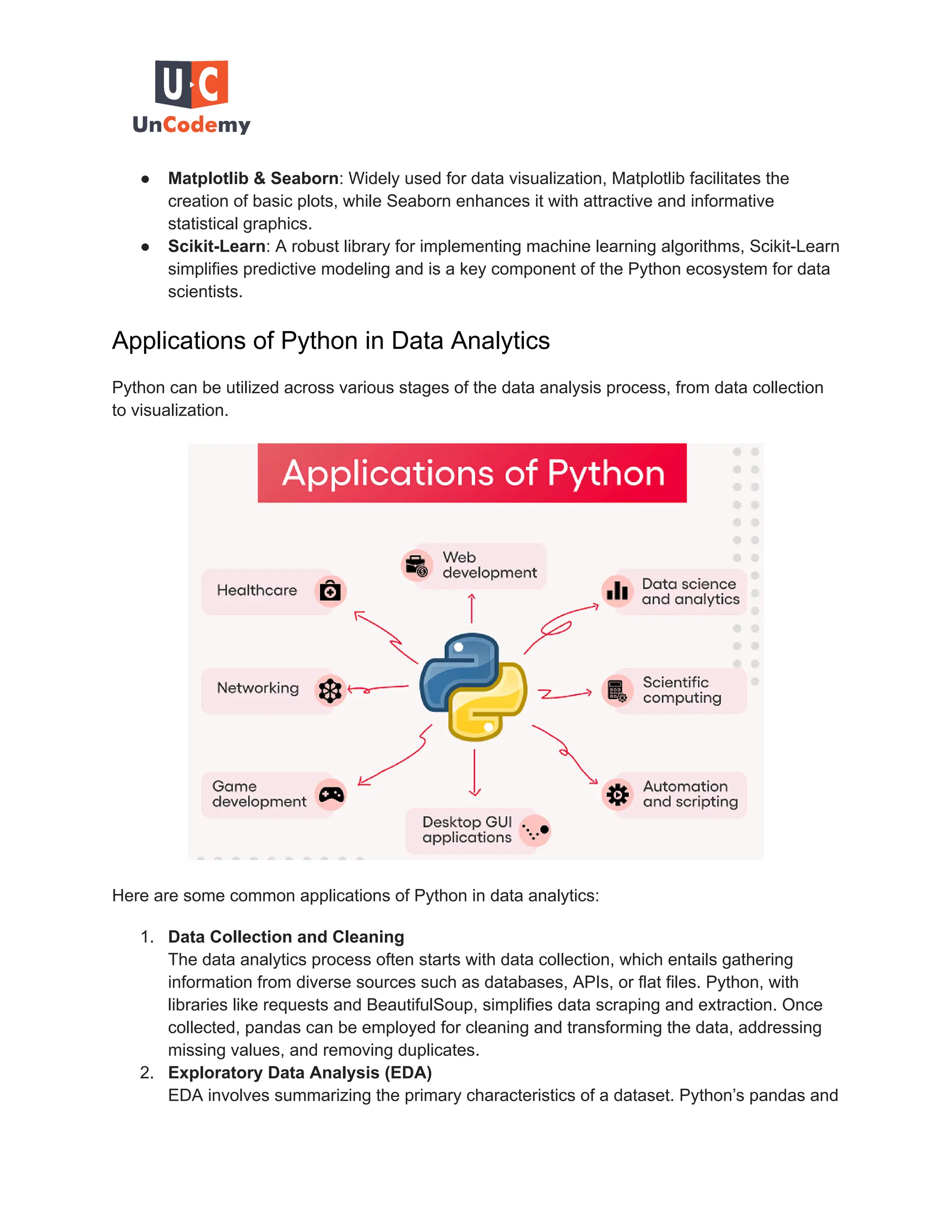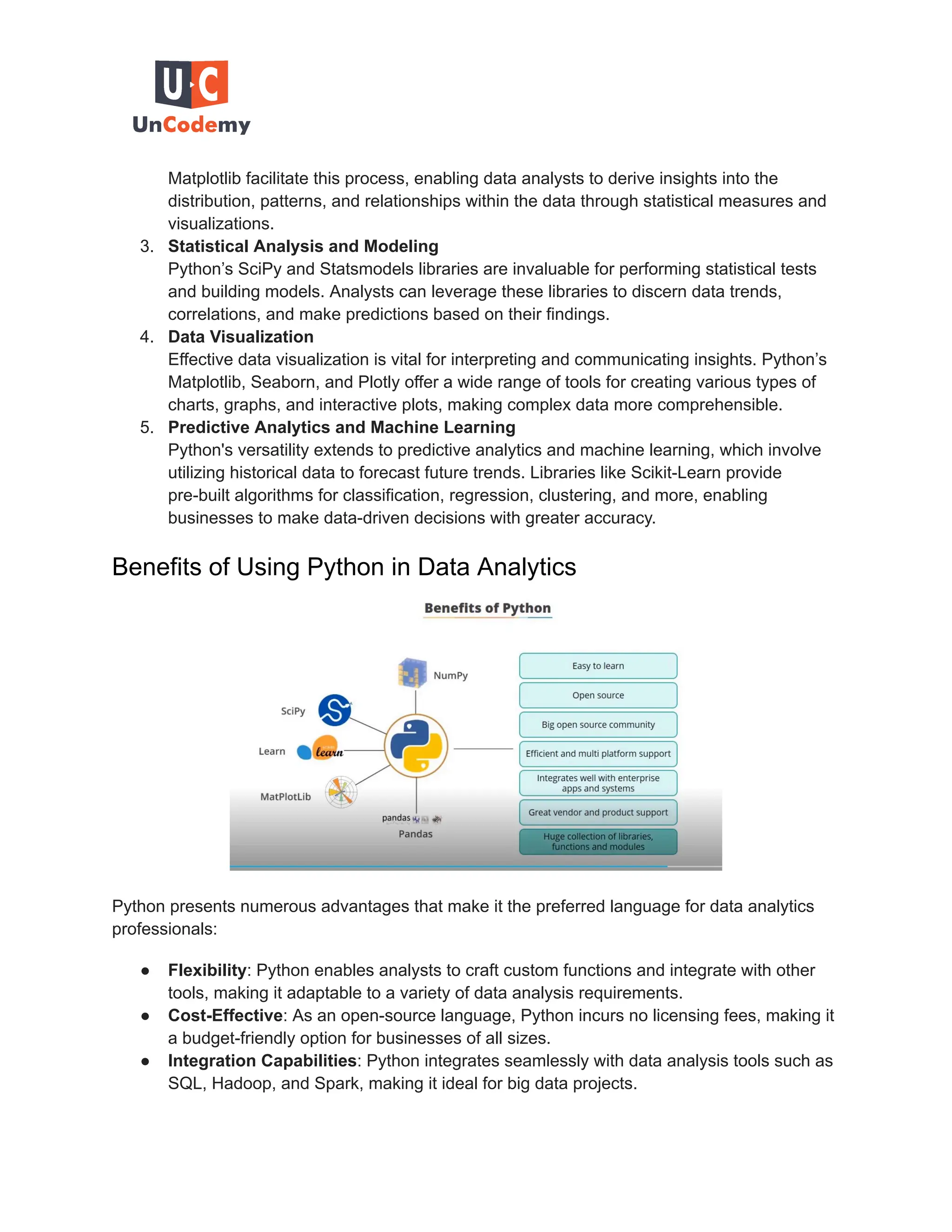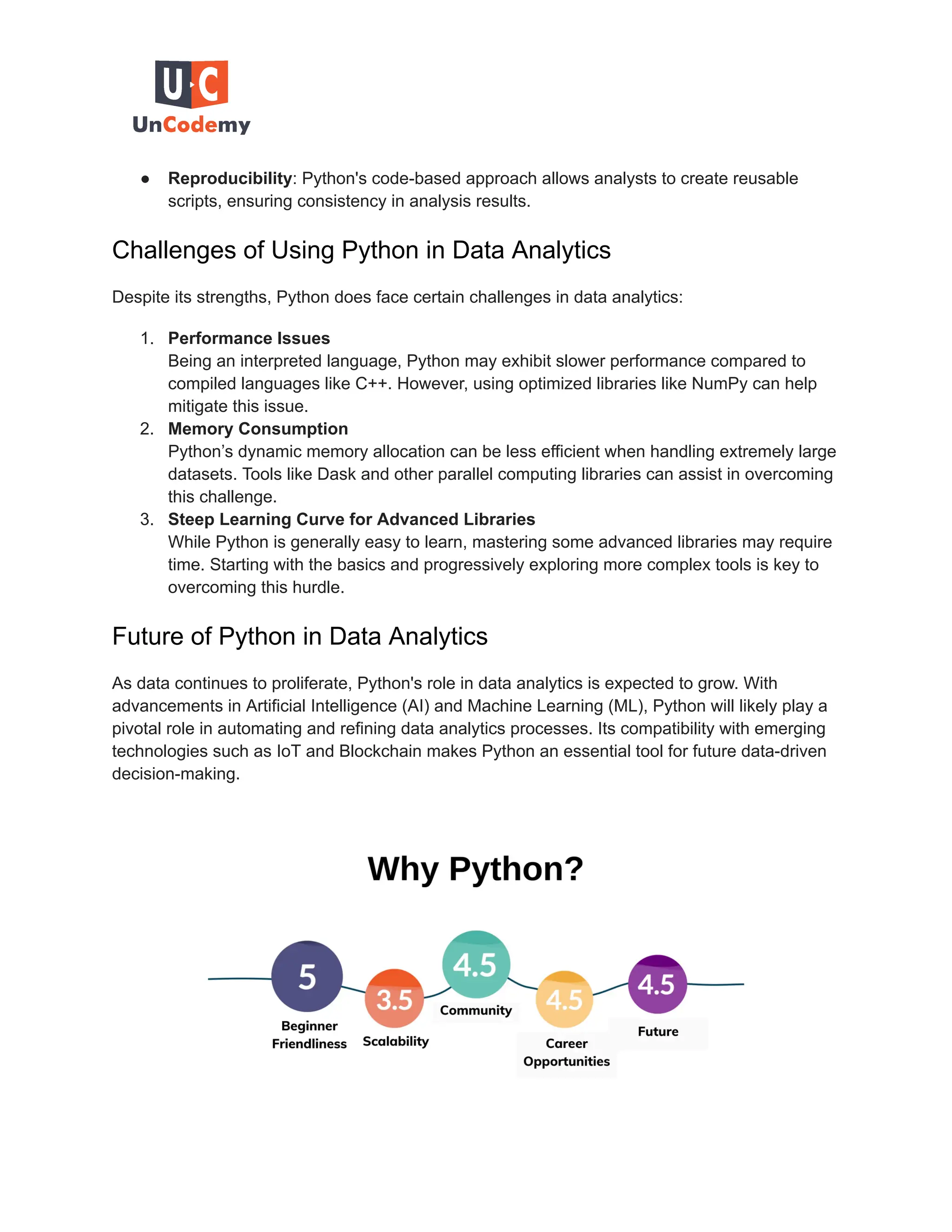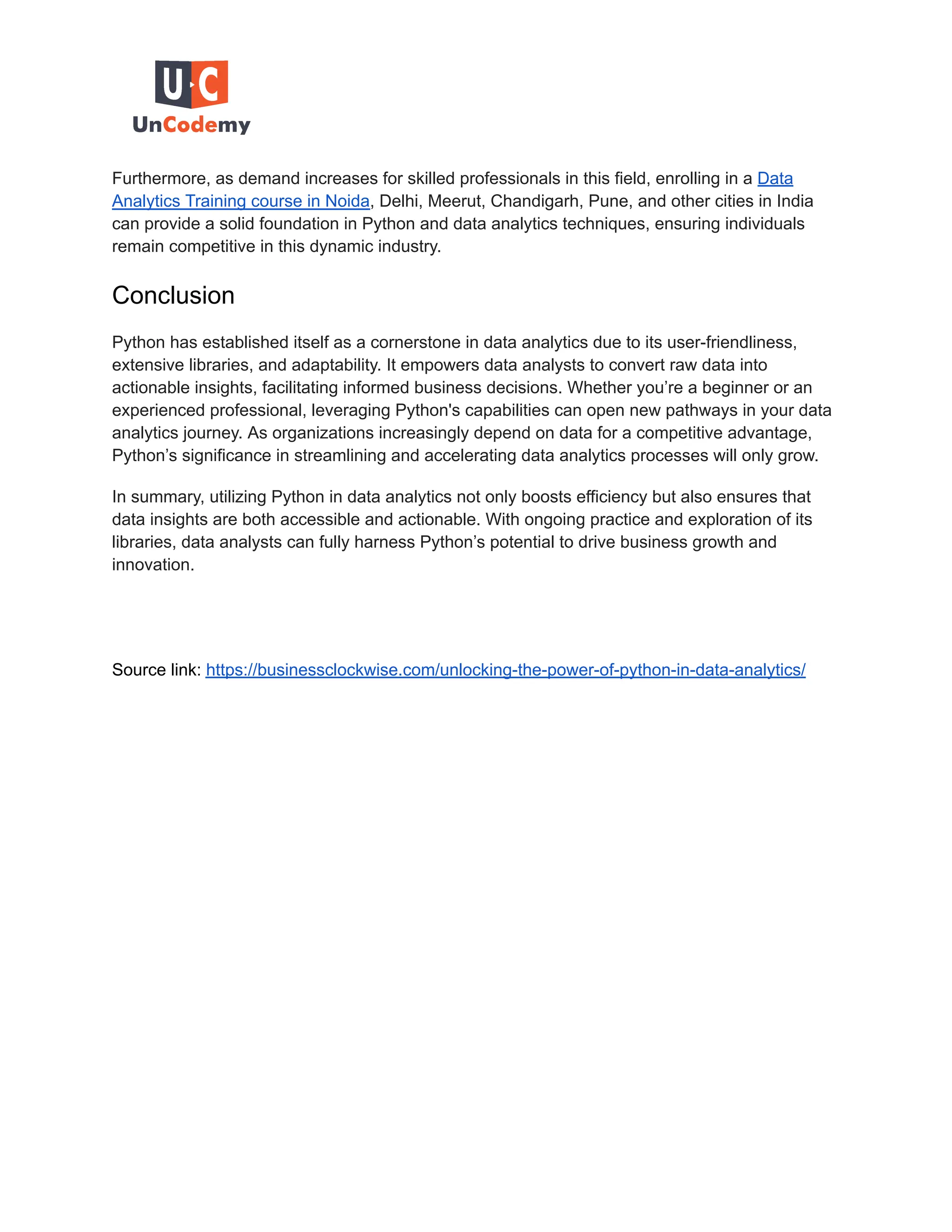The document discusses the significance of Python in data analytics, highlighting its user-friendly syntax, extensive libraries, and strong community support, which make it a popular choice among data professionals. It outlines Python's applications in data collection, exploratory data analysis, statistical modeling, and machine learning, emphasizing its flexibility and cost-effectiveness. The article also addresses challenges faced when using Python and predicts its growing role in the future of data analytics due to advancements in AI and machine learning.
